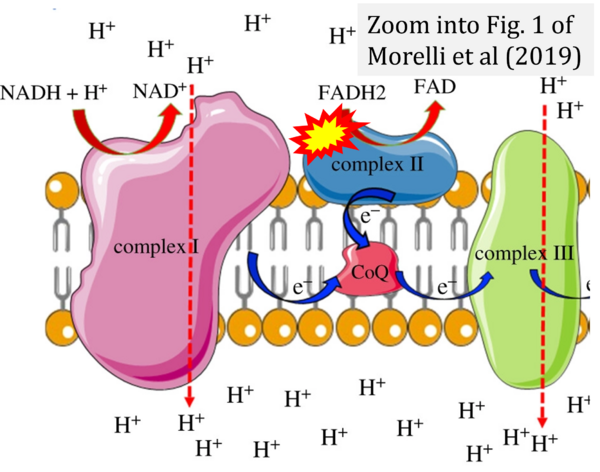Morelli 2019 Open Biol
| Morelli AM, Ravera S, Calzia D, Panfoli I (2019) An update of the chemiosmotic theory as suggested by possible proton currents inside the coupling membrane. Open Biol 9:180221. https://doi.org/10.1098/rsob.180221 |
Morelli AM, Ravera S, Calzia D, Panfoli I (2019) Open Biol
Abstract: Understanding how biological systems convert and store energy is a primary purpose of basic research. However, despite Mitchell's chemiosmotic theory, we are far from the complete description of basic processes such as oxidative phosphorylation (OXPHOS) and photosynthesis. After more than half a century, the chemiosmotic theory may need updating, thanks to the latest structural data on respiratory chain complexes. In particular, up-to date technologies, such as those using fluorescence indicators following proton displacements, have shown that proton translocation is lateral rather than transversal with respect to the coupling membrane. Furthermore, the definition of the physical species involved in the transfer (proton, hydroxonium ion or proton currents) is still an unresolved issue, even though the latest acquisitions support the idea that protonic currents, difficult to measure, are involved. Moreover, FoF1-ATP synthase ubiquitous motor enzyme has the peculiarity (unlike most enzymes) of affecting the thermodynamic equilibrium of ATP synthesis. It seems that the concept of diffusion of the proton charge expressed more than two centuries ago by Theodor von Grotthuss is to be taken into consideration to resolve these issues. All these uncertainties remind us that also in biology it is necessary to consider the Heisenberg indeterminacy principle, which sets limits to analytical questions.
• Bioblast editor: Gnaiger E
Correction: FADH2 and Complex II
- FADH2 is shown as the substrate feeding electrons into Complex II (CII). This is wrong and requires correction - for details see Gnaiger (2024).
- Gnaiger E (2024) Complex II ambiguities ― FADH2 in the electron transfer system. J Biol Chem 300:105470. https://doi.org/10.1016/j.jbc.2023.105470 - »Bioblast link«
Labels:
Regulation: ATP production, mt-Membrane potential


